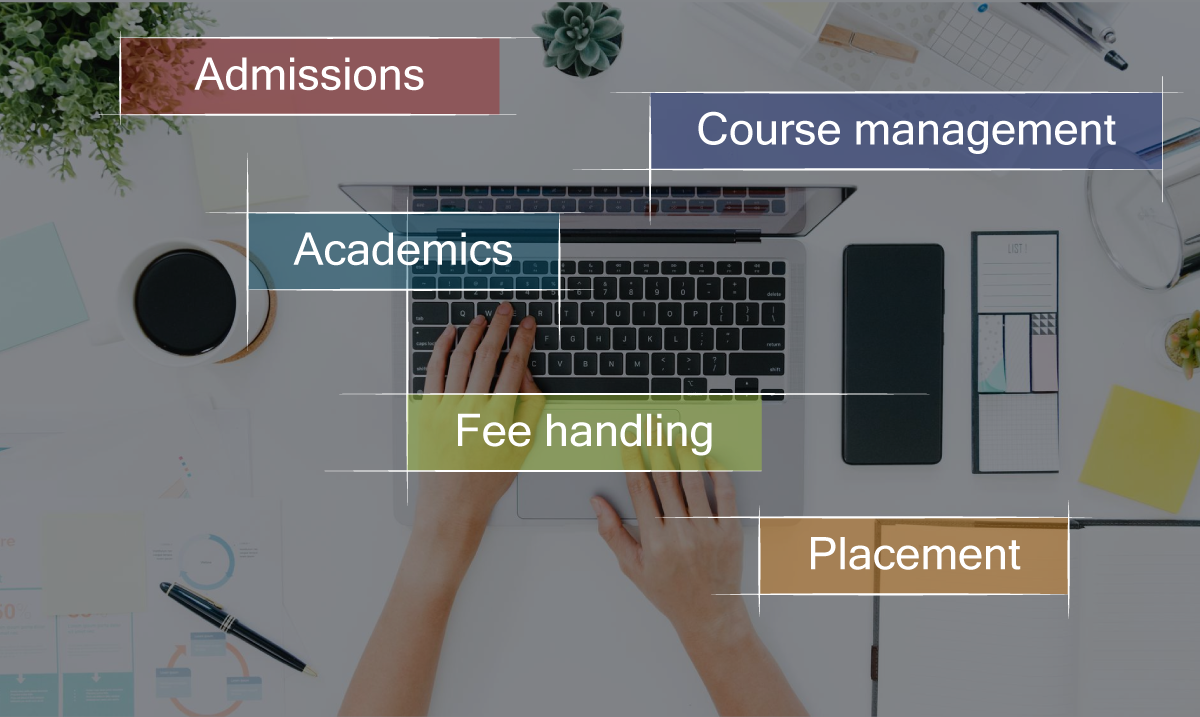
Inside this Article
ToggleOver the last decade, the college administration has witnessed a transformative shift by adopting student information system, proving efficient and crucial for achieving operational excellence. While some institutions are contemplating the benefits of student information system, others have already streamlined day-to-day activities for administrators, faculty, and students with it. Embracing the latest trends and technologies allows for continuous improvement in educational institutions through the power of student management systems.
Are you proficient in this aspect, or is there room for improvement? Take a moment to evaluate your system and the challenges you might encounter due to its inefficiency. Join us as we walk you through the crucial operations that can be streamlined with an efficient student management system, offering the potential for increased profits within a shorter timeframe.
What is a Student Management System ?
A Student Management System (SMS) is a comprehensive software designed to streamline and automate various administrative tasks in educational institutions. It integrates critical functions like admissions, attendance management, course scheduling, financial tracking, and placement handling into a unified platform. By centralizing all student-related data, it helps institutions reduce manual intervention, increase operational efficiency, and make data-driven decisions. With features like real-time analytics, SMS supports continuous improvement, making it an essential tool for modernizing education management.
Top 8 Features of Student Management System
1. Holistic Student Management System
Using a comprehensive system manages everything related to college administration—from admissions to academics, finance, and communication. This allows institutions to streamline operations on a unified platform, eliminating the need to juggle multiple software systems.
2. Customized Solution
A customized software aligns with your unique requirements, institutional standards, and workflow. It guarantees that this system integrates seamlessly with the institution’s existing practices.
3. User-Friendly Interface
Users can navigate the system seamlessly, minimizing the learning curve and fostering widespread adoption. Its intuitive design, easy-to-access analytics, and easy-to-read dashboards make this exciting software.
4. Centralized Data Management
It provides a unified hub for handling student information, faculty records, attendance data, and beyond, removing the necessity of maintaining diverse records across departments. The system minimizes redundancy and preserves precious time for administrative staff.
5. Data-Driven Decision-Making
Reports and analytics give institutions actionable insights. Administrators and educators can make informed decisions by accessing real-time data on student performance, attendance patterns, financial health, and other crucial metrics.
6. Scalability and Flexibility
A modern student management system adapts to your institution’s growth, ensuring seamless functionality for small and expansive universities. Its scalability guarantees effective performance, accommodating current requirements while future-proofing against evolving needs. This flexibility enables institutions to confidently navigate changing landscapes without compromising operational efficiency.
7. Assistance for Accreditation Processes
Student Management Systems plays a vital role in achieving the accreditation goals envisioned by NEP 2020. By streamlining data management and simplifying complex tasks like self-assessment and report generation for processes like NAAC and NBA, SIS empowers institutions to focus on continuous improvement. Tracking key metrics enables data-driven decisions and ensures compliance with accreditation criteria. With transparent data and efficient processes, this can contribute to a smoother and more successful accreditation journey, ultimately supporting the vision of NEP 2020 for a holistic and skill-focused education system.
8. Future-Ready Solution
Possessing a forward-thinking solution that envisions integrating advanced AI/ML capabilities for predictive analytics will empower educational institutions with insightful data, fostering informed decision-making. As the educational landscape evolves, this ensures sustained adaptability, promising optimal performance for tomorrow’s challenges.
Key Operations Simplified with a Student Management System (SIS)
From admissions and academics to placement and training, an ideal student management system handles these diverse functions from a centralized platform—ensuring security, integration, and easy accessibility of all internal data.
Here is a list of activities that can be carried out minimizing manual intervention while maximizing productivity using a student management system.
- Handling Admissions: Initiate admissions seamlessly with online brochures and forms. Ensure a well-organized process for managing a high volume of student admission documents. Validate student eligibility, track admission and status against approved intake, and explore analytics to strategize student admissions, maximizing academic performance and placement results with quality prospects.
- Office Administration: Manage office tasks efficiently, including the issuance of ID cards, the generation of bona fide certificates and no-due certificates, and the extraction of reports and documents for NBA and NAAC accreditations. Optimize the process to reduce time and enhance overall outcomes.
- Attendance Management: Move beyond manual attendance tracking as the software enables online marking for students and staff. Track each student’s attendance, meet overall requirements, and understand staff availability to ensure course outcomes remain unaffected by variations in class numbers. Efficiently minimize attendance irregularities, leading to optimized student outcomes.
- Course Management: Handle courses, schedules, and assignments effortlessly. Simplify tasks like timetable creation, task assignments, and communication of course-related information to students. Everyone stays on the same page, reducing confusion. Enhance your educational standards and quality by streamlining course outcomes. Reduce errors and time spent on manual COPO mapping by providing regular input on course topic completion, students’ internal marks, feedback on final exam question papers, the anticipated pass percentage of students, and the final semester results.
- Examination and Progress Reports: Examinations are now organized with a Student Management System. Administrators can facilitate exam registrations, generate hall tickets, oversee exam fee payments, coordinate exam hall arrangements, and publish results online all while maintaining a comprehensive track record of the entire process and its outcomes. Recording and monitoring students’ progress digitally creates detailed reports on academic performance, behavior, and attendance. These reports enable data-driven decision-making, timely interventions, and support for improving students facing challenges.
- Placement Handling: Experience the convenience of organizing and conducting training and placement programs with a student management software. Post job openings, coordinate interviews for qualified candidates, and monitor metrics such as students who attended, got selected, and accepted job offers. Tracking placement status is just a click away for placement officers.
- Financial Management: Administer daily fee collection, maintain the list of defaulters, monitor scholarship statuses, handle online transactions, track location-specific fee collections, manage approved fee permissions based on period and amount, and send fee reminders—all seamlessly integrated with your student management system. This ensures accuracy in financial records and provides transparency for the institution and parents.
Conclusion
A higher educational institution is the foundation for students to explore the outside world and prepares them to evolve. Providing students with a premier example and experience is crucial in this setting. This necessitates offering a sophisticated experience, including future-perfect solutions integrated into the admissions and academic processes.
Furthermore, leveraging the extensive data at their disposal empowers institutions to establish and meet key performance indicators, enhancing their quality education standards. iTech, with a vision to elevate benchmark standards, aids institutions in recognizing opportunities for improvement and guides them to achieve them.



